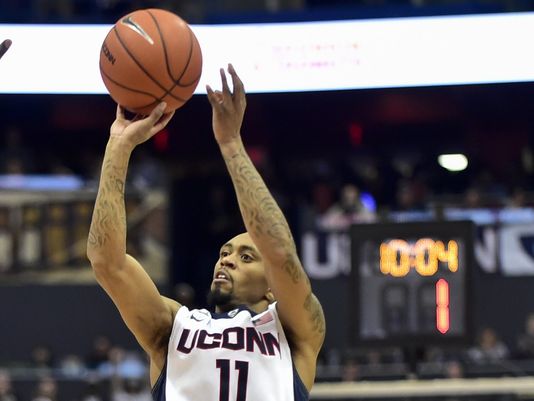Last Friday, the NCAA Rules Committee ended their biennial meeting on possible rule changes to be put into effect the following season. The pressing issue had to deal with the lack of scoring and ways in which they could make college basketball more aesthetically pleasing. The prevailing theory among fans and experts around the game of college basketball was that lowering the amount of time on the shot clock would be the most likely way to do so. I’m here to tell you that it is not! As much as all human beings think that 35 seconds is too long, it was far from the reason that scoring was so down; in fact, it may have salvaged what was still available. Let’s see how much human beings will enjoy the game when it takes a turn toward token pressure, zone defense, and teams forcing up terrible shots at the end of a shot clock.
Let’s take a look at the basic math behind shortening a shot clock by five seconds: It is now possible to fit eighty 30-second intervals into a game as opposed to around sixty-eight and a half 35-second intervals. Many people see this as an increase in “possessions,” however, the shot clock rarely ever lowered under 5 seconds throughout the course of the game. The average college basketball game last season had between 125 and 135 possessions. How many of those possessions does the clock tick below 5 seconds? Four, maybe five times a game at most (someone needs to keep a stat of this somewhere!)? Thus, the 30-second shot clock is eliminating somewhere around 4% of those possessions that resulted in either forced shots or shot clock violations.
In general, the time that coaches declare “end of shot clock” begins when there is around eight or nine seconds left on the shot clock. In the era of the 35-second shot clock, that occurs 26 seconds into the shot clock, now will take place about 21 seconds. A difference that may not sound like a lot, but may prove to be FATAL when it comes to college basketball scoring. Why is this? Let’s take a closer look at a typical college basketball possession:
The beginning of a typical possession usually begins with a team with the ball in their defensive half of the court. Without getting a long outlet pass leading to a fast-break, typically a big guy takes a few seconds to get the ball to his point guard; whether it’s inbounding the ball or giving an outlet pass after a rebound. This is where the most fatal flow will take place in lessening the shot clock! Coaches will be nearly ignorant to not put some type of token pressure on the ball-handler to try to force them to use nearly all ten seconds before crossing the mid-court line. I am not talking about the type of pressure most people think of, as in a Louisville-like pressure designed to force the other team into turnovers; I am talking about a zone pressure designed to slow teams down, take them out of their rhythm, and force them to use a lot of the shot clock (uh oh!). These types of presses usually succeed in forcing a team to use between seven and nine seconds before crossing the mid court line.
That leaves teams twelve seconds to operate their offense in the half-court. Of those twelve seconds, it usually takes another three or four seconds to get the ball to the point guard, call a play, and initiate it. Now, they will only have eight seconds to get a good shot. That is a ludicrous amount of time! That’s barely enough to run a play, get a ball reversal, and maybe get another one to shift the defense. By then it is an “end-of-clock” situation, where coaches will likely run a simple ball-screen or quick-hitter and hope to get a good shot; most of the time resulting in a forced heave at the basket with at least one defender contesting the shot. Now if that defensive team plays zone, two ball reversals will barely be enough to even make the defense blink much less shift enough to get a good shot. That is the truth and you can’t handle the truth!
Thus, the world of college basketball is not nearly ready for a move to the era of a 30-second shot clock without several rule changes. These changes would have to involve banning zone pressure (not happening), banning zone defense (not happening), or eliminating the ten-second violation for not getting the ball over mid-court (and the triple!). And as much as you may hate what my theory states; you want me writing this article! You need me writing this article! And whether or not my theory proves to be true, we are stuck with this rule for the next two years. So when this fails in November to increase scoring or even decreases it, we will be stuck with it until at least the 2017-2018 season. We’ll have to enjoy what we have. Everybody knows I will being the die-hard that I am, but will the casual fan? That remains to be seen.











